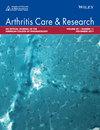Exploring Pain Adaptation in Youth With Juvenile Idiopathic Arthritis: Identifying Youth and Parent Resilience Resources and Mechanisms
Abstract
Objective
Although juvenile idiopathic arthritis (JIA) is often associated with pain, this experience does not necessitate negative outcomes (eg, depression, functional impairment). Little research has explored youth and parent resilience resources (ie, stable traits) and mechanisms (ie, dynamic processes) in this context, and studies have focused on their contributions independently rather than collectively. This study, informed by the Ecological Resilience-Risk Model in Pediatric Chronic Pain, sought to (1) explore the relationships among youth and parent resilience resources and mechanisms and (2) identify the relative importance (RI; ie, independent contributions when entered simultaneously) of evidence-based youth and parent resources and mechanisms in contributing to youth-reported recovery, sustainability, and growth outcomes.
Methods
Youth (13–18 years) with JIA and their parents (156 dyads) completed a battery of online questionnaires assessing resilience resources (optimism, resilience), mechanisms (psychological flexibility, pain acceptance, self-efficacy), recovery and sustainability (pain intensity, functional disability, health-related quality of life), and growth (benefit finding) outcomes.
Results
Analyses demonstrated significant positive correlations across within-person resources and mechanisms and weaker correlations across within-dyad resources and mechanisms. Although the RI of predictors varied by outcome, youth pain acceptance was the most robust predictor across models (RI = 0.03–0.15). Some predictors (eg, parent psychological flexibility and pain acceptance) were generally categorized as “Not Important,” whereas others (eg, youth resilience) had “Inconclusive” results, suggesting construct overlap.
Conclusion
Although additional research is needed to further understand resilience, results highlight the importance of fostering pain acceptance in youth and incorporating parents in psychosocial interventions to optimize living with JIA.


 求助内容:
求助内容: 应助结果提醒方式:
应助结果提醒方式:


